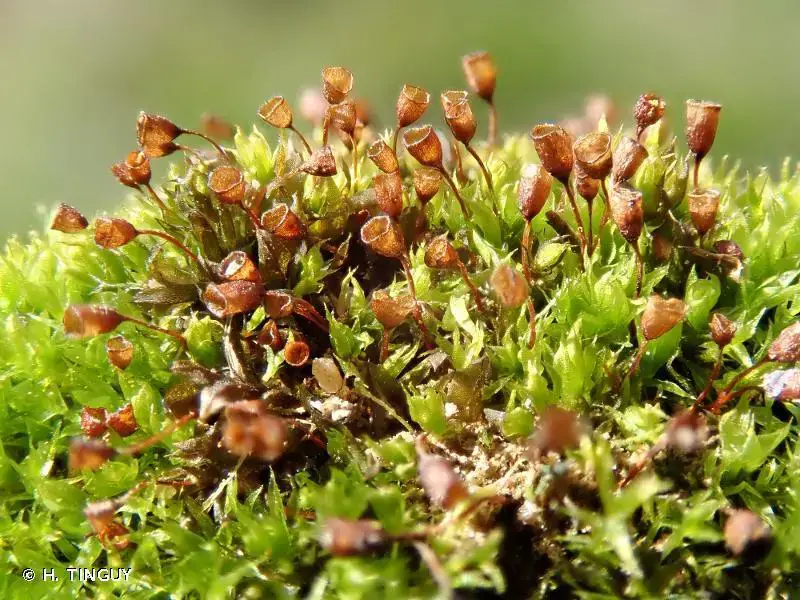
314642.jpg from: https://inpn.mnhn.fr/espece/cd_nom/434263
Introduction
The world of bryophytes, or non-vascular plants, is a fascinating realm that often goes unnoticed by many. Among these diminutive yet resilient organisms lies the Tortula bogotensis (Hampe) Mitt., a moss species belonging to the Pottiaceae family, commonly known as Tortula. This unassuming plant has captured the interest of enthusiasts and researchers alike, offering a glimpse into the intricate workings of nature’s smallest wonders.
Background
Before delving into the specifics of Tortula bogotensis, it’s essential to understand the broader context of bryophytes. These ancient plants, which include mosses, liverworts, and hornworts, have been around for over 400 million years, predating even the earliest vascular plants. Despite their small stature, they play crucial roles in various ecosystems, acting as pioneers in colonizing new environments and contributing to soil formation and water retention.
Main Content
Morphology and Identification
Tortula bogotensis is a small, acrocarpous moss, meaning its sporophytes (spore-bearing structures) grow at the tips of the stems. Its leaves are lanceolate (lance-shaped) and spirally twisted when dry, a characteristic that aids in water retention. The calyptra (a cap-like structure covering the developing sporophyte) is cucullate (hood-shaped), and the capsules (spore-bearing structures) are cylindrical and erect.
Global Distribution and Habitat
This moss species is widely distributed across various regions, including South America, Central America, Mexico, and the Caribbean. It thrives in diverse habitats, such as exposed soil, rock crevices, and tree bark, often forming dense mats or cushions. Tortula bogotensis is particularly well-adapted to arid and semi-arid environments, showcasing its remarkable resilience.
Ecological Roles and Adaptations
Like many bryophytes, Tortula bogotensis plays a vital role in its ecosystem. It contributes to soil formation and water retention, creating microhabitats for other organisms. Additionally, its ability to colonize and stabilize disturbed areas makes it an important pioneer species.
One of the remarkable adaptations of Tortula bogotensis is its desiccation tolerance. This moss can survive prolonged periods of drought by entering a state of dormancy, reviving once water becomes available again. This adaptation allows it to thrive in arid and semi-arid regions, where water availability is often scarce.
Case Studies/Examples
In a study conducted in the Atacama Desert of Chile, researchers found Tortula bogotensis to be one of the few moss species capable of surviving in this hyper-arid environment. Its ability to rapidly rehydrate and resume photosynthesis after rare rainfall events highlights its remarkable resilience and adaptability.
Technical Table
| Characteristic | Description |
|---|---|
| Family | Pottiaceae |
| Genus | Tortula |
| Species | Tortula bogotensis (Hampe) Mitt. |
| Growth Form | Acrocarpous moss |
| Leaf Shape | Lanceolate, spirally twisted when dry |
| Calyptra | Cucullate (hood-shaped) |
| Capsules | Cylindrical, erect |
| Distribution | South America, Central America, Mexico, Caribbean |
| Habitat | Exposed soil, rock crevices, tree bark |
| Ecological Roles | Soil formation, water retention, pioneer species |
| Adaptations | Desiccation tolerance, rapid rehydration |
Conclusion
The Tortula bogotensis (Hampe) Mitt., a member of the Pottiaceae family and commonly known as Tortula, is a remarkable moss species that showcases the incredible resilience and adaptability of bryophytes. From its unique morphological features to its ability to thrive in arid environments, this unassuming plant offers a fascinating glimpse into the intricate workings of nature’s smallest wonders. As we continue to explore and appreciate the diversity of life on our planet, the Tortula bogotensis serves as a reminder of the importance of preserving and protecting even the most inconspicuous organisms, for they play vital roles in maintaining the delicate balance of our ecosystems.
Thought-provoking question: In a world where larger organisms often capture our attention, how can we foster a greater appreciation for the invaluable contributions of these tiny, yet mighty bryophytes?